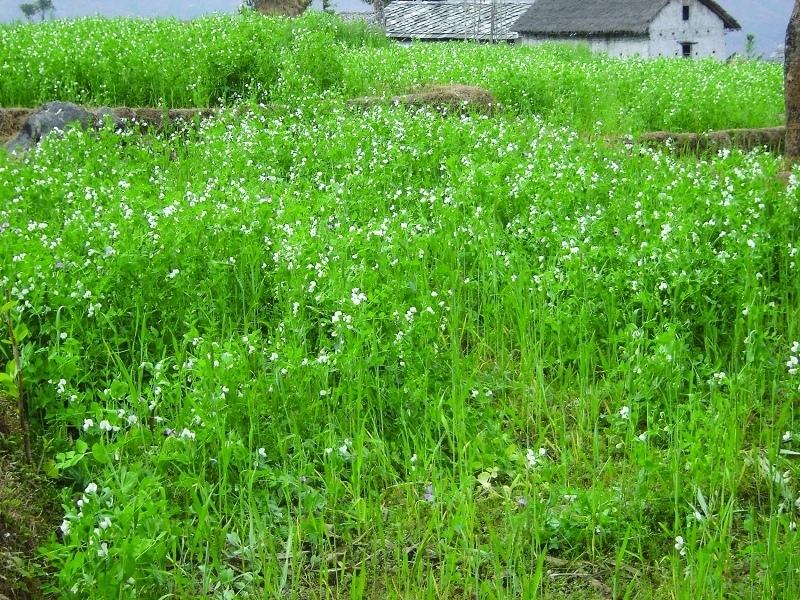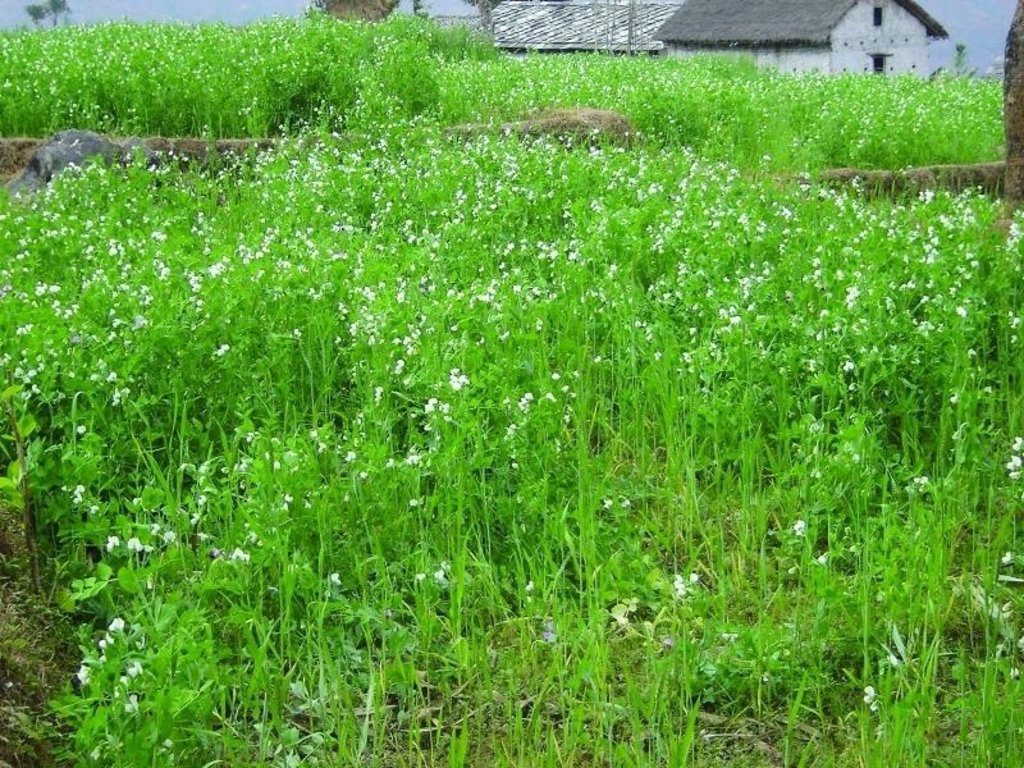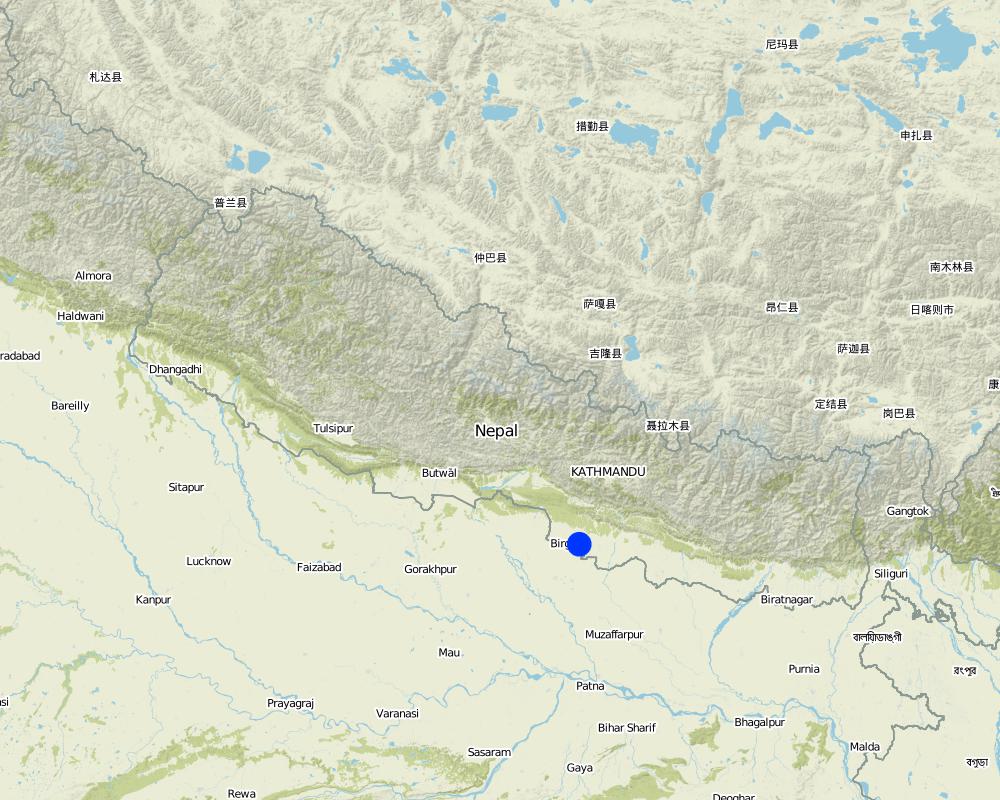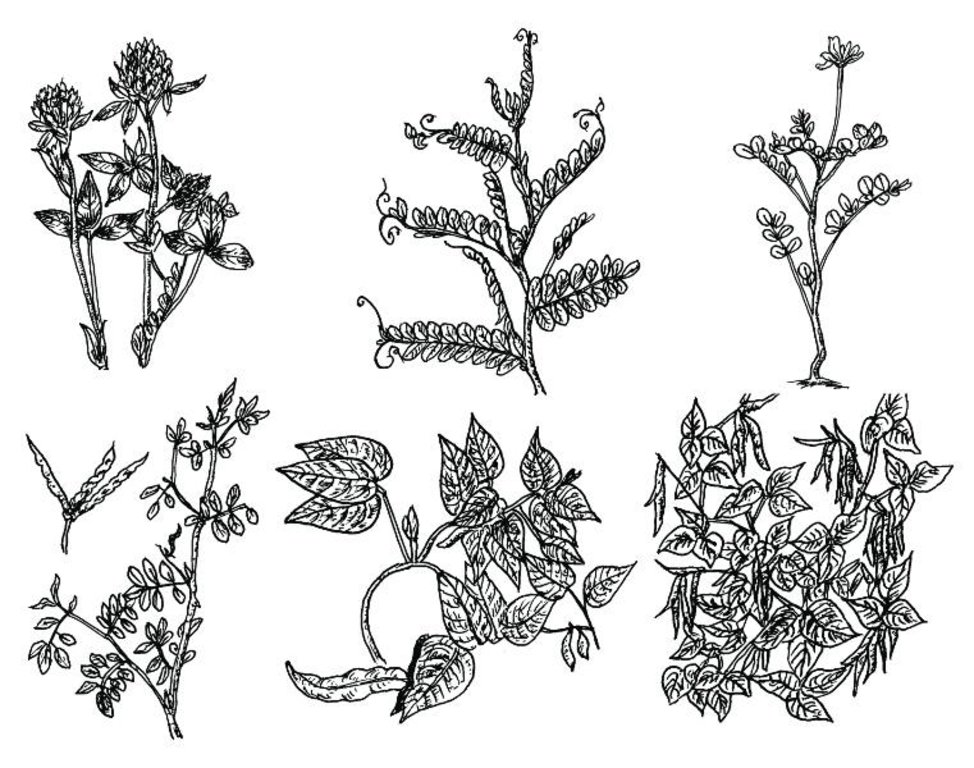Legume integration [Nepal]
- Criação:
- Atualização:
- Compilador/a: Richard Allen
- Editor: –
- Revisores: David Streiff, Alexandra Gavilano
Bali pranali ma kosebali samabesh
technologies_1753 - Nepal
Veja as seções
Expandir tudo Recolher tudo1. Informação geral
1.2 Detalhes do contato das pessoas capacitadas e instituições envolvidas na avaliação e documentação da tecnologia
Especialista em GST:
Director
Soil Management Directorate, Department of Agriculture
Nepal
Especialista em GST:
Team Leader
Sustainable Soil Management Programme
Nepal
Nome do projeto que facilitou a documentação/avaliação da Tecnologia (se relevante)
Sustainable Soil Management Programme, Nepal (SSMP)Nome da(s) instituição(ões) que facilitou(ram) a documentação/ avaliação da Tecnologia (se relevante)
Department of Agriculture, Soil Management Directorate, Hariharbhawan Lalitpur (doasoil) - NepalNome da(s) instituição(ões) que facilitou(ram) a documentação/ avaliação da Tecnologia (se relevante)
HELVETAS (Swiss Intercooperation)1.3 Condições em relação ao uso da informação documentada através de WOCAT
O/a compilador/a e a(s) pessoa(s) capacitada(s) aceitam as condições relativas ao uso de dados documentados através da WOCAT:
Sim
1.5 Referência ao(s) questionário(s) sobre abordagens GST (documentado(s) usando WOCAT)

Farmer field schools on integrated plant nutrient systems [Nepal]
Participatory and collaborative learning through the farmer field school approach
- Compilador/a: Richard Allen
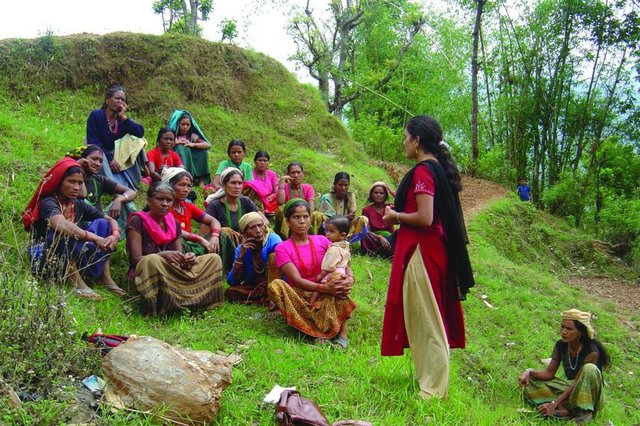
Farmer-led experimentation [Nepal]
Participatory technology testing and adaptation through farmer-led experiments
- Compilador/a: Richard Allen

Farmer-to-farmer diffusion [Nepal]
Wider diffusion of sustainable soil management technologies through a demand responsive farmer-to-farmer diffusion approach
- Compilador/a: Richard Allen
2. Descrição da tecnologia de GST
2.1 Descrição curta da tecnologia
Definição da tecnologia:
Integration of leguminous crops as intercrops on terrace risers or as relay crops
2.2 Descrição detalhada da tecnologia
Descrição:
Legumes are widely grown across the hills of Nepal, with the most common being soybean, lentils, black gram, cow pea, beans, horse gram, field peas, and rice bean. They are mostly intercropped or relay cropped with cereals such as maize, millet, and rice. They are also planted on the edges of terraces and rice paddy bunds. Depending on the species, they may be grown in rain-fed or irrigated fields during the winter or summer seasons.
The majority of the legumes grown by farmers are used for food or as a cash crop. The planting of fodder legumes has become more popular with the expansion of stall-feeding and the development of a dairy industry. The planting of legumes, with the main objective of improving soil fertility is a more recent development in Nepal’s hills.
Nitrogen is the main plant nutrient element and is usually applied through commercial fertiliser where available. Legumes fix atmospheric nitrogen through bacterial nodules on their roots, then nitrogen subsequently becomes available to the following crops. It is important, therefore, not to uproot the legume crop during harvesting - it should be harvested by cutting the above ground parts leaving the roots (and the nodules) in the soil. The crop residues can be fed to livestock, used as animal bedding, applied as green manure directly to fields, or incorporated in compost. In this way most of the nitrogen that was fixed by the legume crop is returned to the soil.
Details about the different legume species and their different characteristics and uses are described in detail in SSMP, PARDYP and SSD-NARC (2000).
2.3 Fotos da tecnologia
2.5 País/região/locais onde a tecnologia foi aplicada e que estão cobertos nesta avaliação
País:
Nepal
Especificação adicional de localização:
Midhills districts of Nepal
Especifique a difusão da tecnologia:
- Uniformemente difundida numa área
Map
×3. Classificação da tecnologia de GST
3.1 Principal/principais finalidade(s) da tecnologia
- improve soil fertility
3.2 Tipo(s) atualizado(s) de uso da terra onde a tecnologia foi aplicada

Terra de cultivo
- Cultura anual
Comentários:
Major land use problems (compiler’s opinion): Intensifying cultivation practices with either 1) inadequate application of fertilisers leading to a decline in soil fertility and the mining of soil nutrients or 2) the application of too much fertiliser causing environmental problems through excessive leaching, losses of fertiliser in surface runoff, and consequent eutrophication or nitrification of streams, ponds, or groundwater.
3.5 Grupo de GST ao qual pertence a tecnologia
- Gestão integrada de fertilidade do solo
- variedades vegetal/raças de animais melhoradas
3.6 Medidas de GST contendo a tecnologia

Medidas agronômicas
- A2: Matéria orgânica/fertilidade do solo
3.7 Principais tipos de degradação da terra abordados pela tecnologia

Deteriorização química do solo
- Cn: declínio de fertilidade e teor reduzido de matéria orgânica (não causado pela erosão)
3.8 Redução, prevenção ou recuperação da degradação do solo
Especifique o objetivo da tecnologia em relação a degradação da terra:
- Reduzir a degradação do solo
4. Especificações técnicas, implementação de atividades, entradas e custos
4.1 Desenho técnico da tecnologia
Especificações técnicas (relacionada ao desenho técnico):
A number of species are presented
in the legume integration decision
support guide (SSMP, PARDYP, SSDNARC 2000). Here only a selection of useful legume species are presented (from top left corner to lower right corner):
- red clover (Trifolium pratense)
- hairy vetch (Vicia villosa Roth)
- Chinese milk vetch (Astragalus sinicus)
- rice bean (Vigna umbellata)
- velvet bean (Mucuna pruriens)
- tephrosia (Tephrosia spp.
Technical knowledge required for field staff / advisors: low
Technical knowledge required for land users: low
Main technical functions: increase in soil fertility (nitrogen in particular), increase in soil productivity & decrease in soil erosionon terrace bunds, nutritius and high value crops
Secondary technical functions: fodder and green manure availability & income
4.2 Informação geral em relação ao cálculo de entradas e custos
Especifique como custos e entradas foram calculados:
- Por unidade de tecnologia
Especifique a moeda utilizada para os cálculos de custo:
- USD
Indique a média salarial da mão-de-obra contratada por dia:
2.00
4.4 Custos e entradas necessárias para a implantação
| Especifique a entrada | Unidade | Quantidade | Custos por unidade | Custos totais por entrada | % dos custos arcados pelos usuários da terra | |
|---|---|---|---|---|---|---|
| Mão-de-obra | Labour | Persons/day | 2,5 | 2,0 | 5,0 | |
| Material vegetal | Seeds | unit | 1,0 | 1,5 | 1,5 | |
| Custos totais para a implantação da tecnologia | 6,5 | |||||
| Custos totais para o estabelecimento da Tecnologia em USD | 6,5 | |||||
4.5 Atividades recorrentes/manutenção
| Atividade | Periodicidade/frequência | |
|---|---|---|
| 1. | Depending on the type of farm niche - broadcast, line sow, or spot |
4.6 Custos e entradas necessárias pata a manutenção/atividades recorrentes (por ano)
Comentários:
Cost as in January 2007
5. Ambiente natural e humano
5.1 Clima
Precipitação pluviométrica anual
- <250 mm
- 251-500 mm
- 501-750 mm
- 751-1.000 mm
- 1.001-1.500 mm
- 1.501-2.000 mm
- 2.001-3.000 mm
- 3.001-4.000 mm
- > 4.000 mm
Especificações/comentários sobre a pluviosidade:
Annual rainfall: Also 2000-3000 mm
Zona agroclimática
- úmido
Thermal climate class: subtropics
5.2 Topografia
Declividade média:
- Plano (0-2%)
- Suave ondulado (3-5%)
- Ondulado (6-10%)
- Moderadamente ondulado (11-15%)
- Forte ondulado (16-30%)
- Montanhoso (31-60%)
- Escarpado (>60%)
Formas de relevo:
- Planalto/planície
- Cumes
- Encosta de serra
- Encosta de morro
- Sopés
- Fundos de vale
Zona de altitude:
- 0-100 m s.n.m.
- 101-500 m s.n.m.
- 501-1.000 m s.n.m.
- 1.001-1.500 m s.n.m.
- 1.501-2.000 m s.n.m.
- 2.001-2.500 m s.n.m.
- 2.501-3.000 m s.n.m.
- 3.001-4.000 m s.n.m.
- > 4.000 m s.n.m.
Comentários e outras especificações sobre a topografia:
Slopes on average:Also moderate (6-10%), rolling (11-15%) and hilly (16-30%)
Landforms: Also footslopes
Altitudinal zone: Also 1000-1500 m a.s.l., 1500-2000 m a.s.l. and 2000-2500 m a.s.l.
5.6 Características dos usuários da terra que utilizam a tecnologia
Orientação de mercado do sistema de produção:
- Subsistência (autoabastecimento)
- Comercial/mercado
Indivíduos ou grupos:
- Indivíduo/unidade familiar
Indique outras características relevantes dos usuários da terra:
Off-farm income specification: In most farm households, off-farm income plays at least a minor and increasingly a major role. Occasional opportunities for off-farm income present themselves in the form of daily labour wages. Some households’ members receive regular salaries whilst an increasing number of Nepalis are working in India, the Middle East, Malaysia and elsewhere and sending remittance incomes home.
5.7 Área média de terrenos utilizados pelos usuários de terrenos que aplicam a Tecnologia
- < 0,5 ha
- 0,5-1 ha
- 1-2 ha
- 2-5 ha
- 5-15 ha
- 15-50 ha
- 50-100 ha
- 100-500 ha
- 500-1.000 ha
- 1.000-10.000 ha
- > 10.000 ha
5.8 Propriedade de terra, direitos de uso da terra e de uso da água
Propriedade da terra:
- Indivíduo, não intitulado
- Indivíduo, intitulado
Direitos do uso da terra:
- Arrendado
- Indivíduo
Comentários:
sharecropping between owner and tenant
6. Impactos e declarações finais
6.1 Impactos no local mostrados pela tecnologia
Impactos socioeconômicos
Renda e custos
Despesas com insumos agrícolas
Comentários/especificar:
Reduced expenses for nitrogen fertilizers
Outros impactos socioeconômicos
Livestock fodder nutritiousness
Value and nutritiousness of crops
Crop in terms of main yield
Impactos ecológicos
Solo
Perda de solo
Matéria orgânica do solo/carbono abaixo do solo
Biodiversidade: vegetação, animais
Controle de praga/doença
Comentários/especificar:
Highly susceptible to diseases and pests
Outros impactos ecológicos
Application of fertilizer
6.2 Impactos externos mostrados pela tecnologia
Poluição de água subterrânea/rio
Comentários/especificar:
Reduced nutrient flux into water bodies
Dependence on outside
6.4 Análise do custo-benefício
Como os benefícios se comparam aos custos de implantação (do ponto de vista dos usuários da terra)?
Retornos a curto prazo:
positivo
Retornos a longo prazo:
positivo
Como os benefícios se comparam aos custos recorrentes/de manutenção(do ponto de vista dos usuários da terra)?
Retornos a curto prazo:
positivo
Retornos a longo prazo:
positivo
Comentários:
On average a benefi t of US$ 40 to 50 per ropani can be expected from the production of legume species
6.5 Adoção da tecnologia
Comentários:
Comments on spontaneous adoption: About 80% of participating farmers used/had adopted the technolog. It has also been adopted by farmers who have not directly participated in SSMP activities.
6.7 Pontos fortes/vantagens/oportunidades da tecnologia
| Pontos fortes/vantagens/oportunidades na visão do/a compilador/a ou de outra pessoa capacitada |
|---|
| Cost effective in terms of inputs and management practices in comparison with other commodities |
| Needs less agronomic practices and care (i.e. can be cultivated in zero or reduced tillage) |
| Has multiple uses: food crop, feed crop, fodder, soil building |
| Can be integrated in varying niches on farms and therefore does not need additional land |
| Rich indigenous knowledge exists |
6.8 Pontos fracos, desvantagens/riscos da tecnologia e formas de superá-los
| Pontos fracos/vantagens/riscos na visão do/a compilador/a ou de outra pessoa capacitada | Como eles podem ser superados? |
|---|---|
| Highly vulnerable to diseases and pests | Skip planting time (i.e. preponing planting of crops to get around life cycle of pests) , use location specifi c species, resistant varieties |
| Very susceptible to waterlogging | Only plant in well-drained soils |
| In high fertility conditions, nitrogen fixing rhizobium does not work leading to less nitrogen fixation | For very specifi c and new species, the soil needs to be inoculated with the correct strain of bacteria |
| Legumes generally do not respond to nitrogen fertiliser | Do not apply nitrogen fertiliser to legumes |
7. Referências e links
7.1 Métodos/fontes de informação
7.2 Referências às publicações disponíveis
Título, autor, ano, ISBN:
SSMP (2005) Legume Integration Manual (in Nepali). Kathmandu: Sustainable Soil Management Programme
Disponível de onde? Custos?
SSMP
Título, autor, ano, ISBN:
SSMP; PARDYP; SSD-NARC (2000) LegumeIntegration into Hill Farming Systems, Decision Support Guide Kathmandu: Sustainable Soil Management Programme, People and Resource Dynamics Project and Soil Science Division-Nepal Agricultural Research Council
Disponível de onde? Custos?
SSMP
Links e módulos
Expandir tudo Recolher tudoLinks

Farmer field schools on integrated plant nutrient systems [Nepal]
Participatory and collaborative learning through the farmer field school approach
- Compilador/a: Richard Allen

Farmer-led experimentation [Nepal]
Participatory technology testing and adaptation through farmer-led experiments
- Compilador/a: Richard Allen

Farmer-to-farmer diffusion [Nepal]
Wider diffusion of sustainable soil management technologies through a demand responsive farmer-to-farmer diffusion approach
- Compilador/a: Richard Allen
Módulos
Não há módulos


